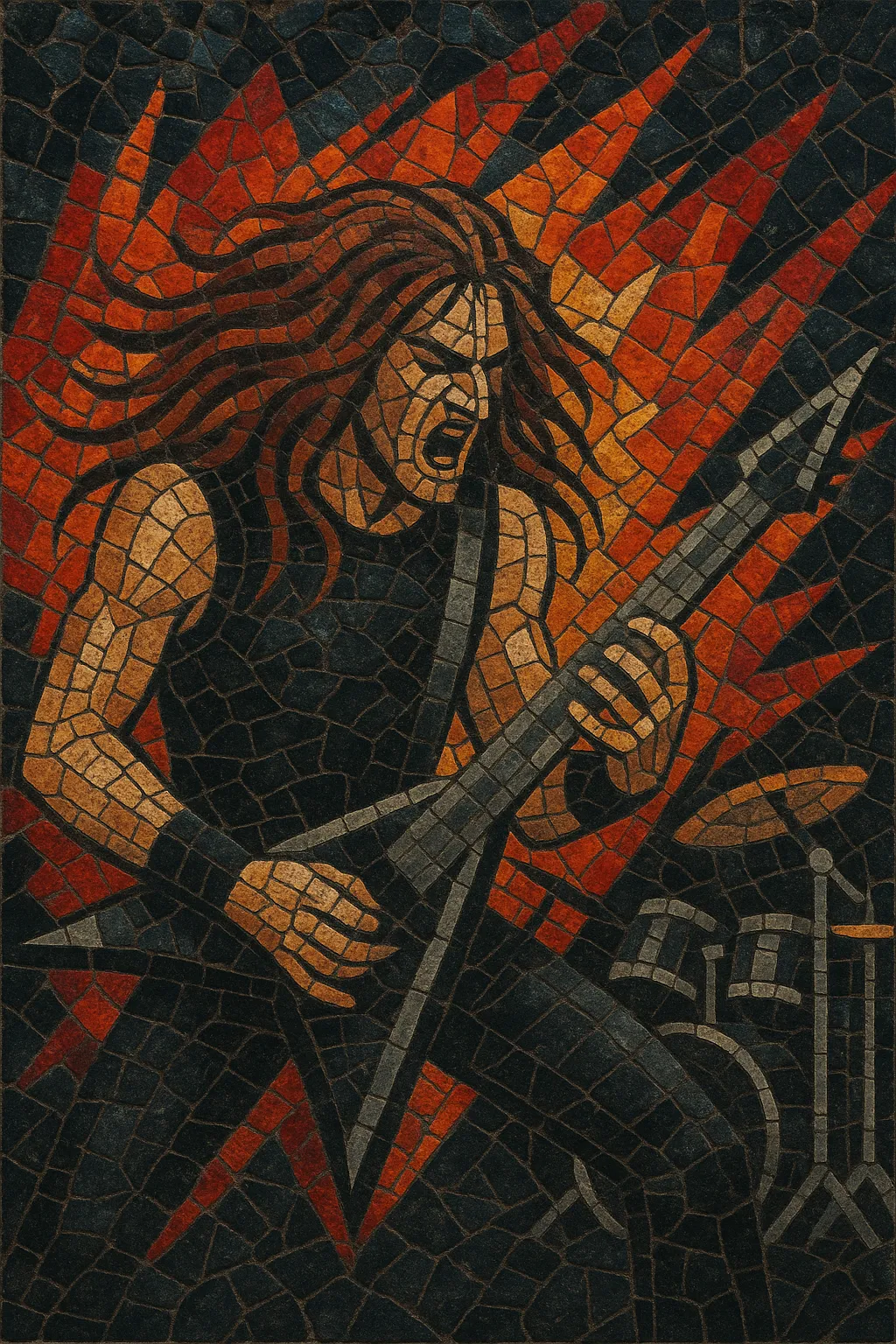
Speed metal is a fast, precision-driven branch of heavy metal that crystallized at the turn of the 1980s. It emphasizes aggressive tempos, tightly synchronized riffing, and virtuosic lead guitar work, while generally retaining melodic, often clean or strident vocals.
Compared with thrash metal, speed metal tends to be less percussive and more melodic, favoring galloping rhythms, twin-guitar harmonies, and classic verse–chorus structures. Drums often employ rapid double-time feels and double-bass patterns, while bass frequently mirrors the rhythm guitar to reinforce propulsion. Lyrical themes range from rebellion and street realism to fantasy, warfare, and sci‑fi.
Speed metal’s DNA comes from the high-energy strain of late-1970s heavy metal and hard rock, especially the New Wave of British Heavy Metal (NWOBHM). Bands like Motörhead and Judas Priest pushed tempos, attack, and technical precision beyond hard rock norms, while punk rock and hardcore punk injected a raw velocity and no‑frills urgency.
By the early 1980s, UK groups such as Raven and mainland European acts like Accept were writing consistently faster, more aggressive metal with clean, cutting vocals and blistering solos. In North America, Canada’s Exciter and the US bands Agent Steel and Riot (V) helped establish a distinct “speed” identity: rapid tempos, galloping riffs, and shredding leads within traditional song forms. This style overlapped with, and in places directly fed into, the emerging thrash scene.
As thrash metal took a harsher, more percussive path, speed metal maintained a more melodic, NWOBHM-informed character. European bands including Helloween and Running Wild developed a brighter, anthemic variant that would catalyze power metal. The discipline, tempos, and neoclassical lead vocabulary of speed metal also informed later technical and neoclassical metal stylings.
Speed metal remains a crucial bridge between classic heavy metal and thrash/power metal. Its hallmarks—tight gallops, rapid alternate picking, soaring vocals, and high-tempo drumming—continue to underpin modern power metal and echo through many contemporary traditional/“old‑school” metal revivals.

